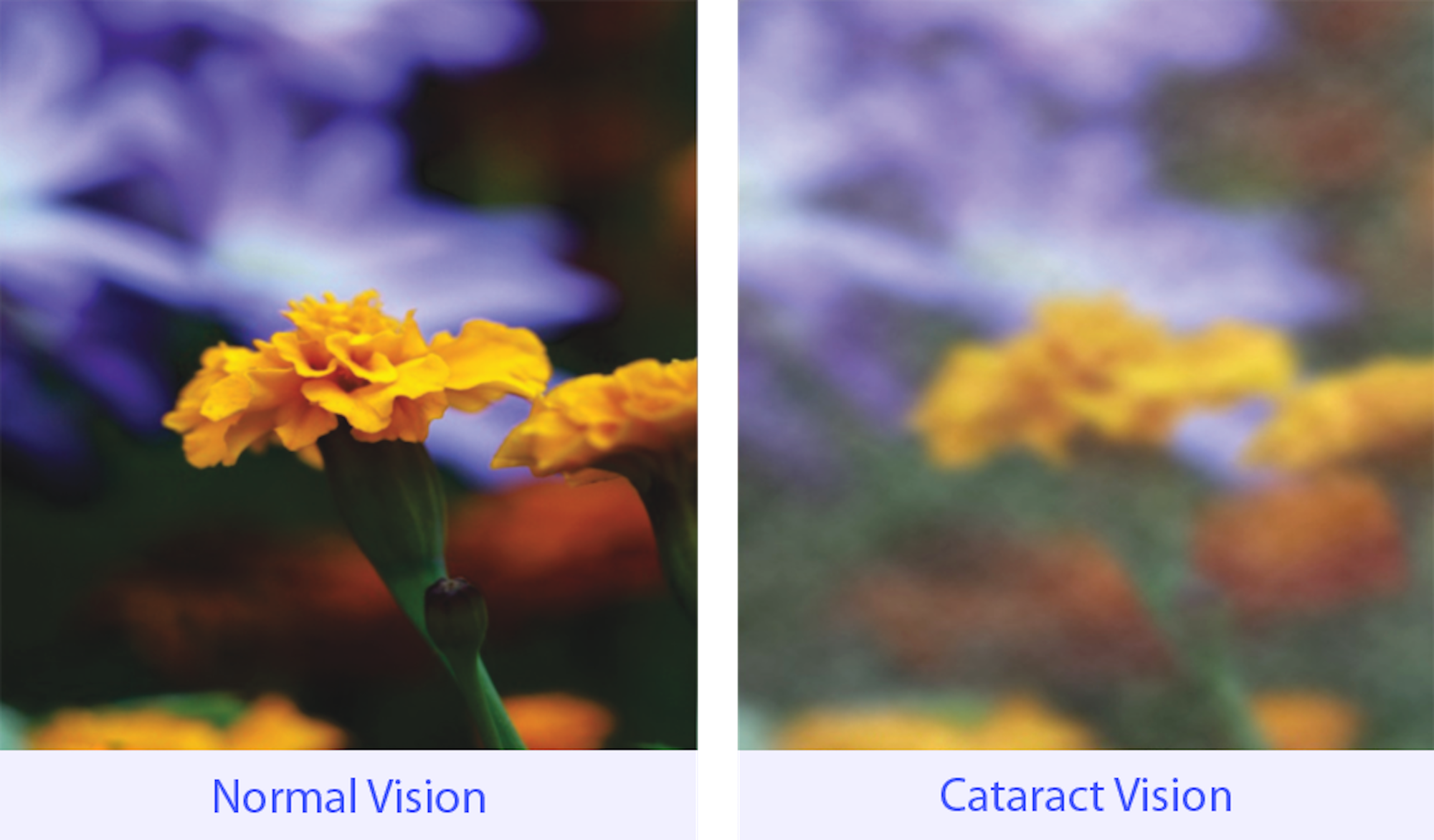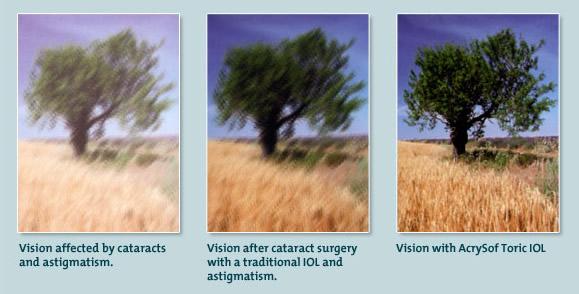Cataracts and Cataract Surgery
What is a Cataract?
Cataracts are one of the most common eye conditions treated by ophthalmologists and usually occur as part of the normal aging process. Marion Eye Center’s surgeons participate in making cataract surgery one of the safest surgeries in the United States.
A cataract is a clouding of the eye’s natural crystalline lens. The lens is responsible for focusing light and producing clear, sharp images. When we were younger, the lens was clear, but as we age, it begins to harden and become cloudy. The cloudy lens diminishes the quality of vision.
Common symptoms of cataracts are:
• Glare around lights
• Difficulty reading fine print
• Dulling of colors
• Trouble driving at night
Causes of Cataract
The exact cause of a cataract is often unknown. Most often, a cataract is simply part of the aging process.
Certain factors may also play a role:
• Excessive exposure to sunlight
• Inflammation in the eye
• Hereditary issues
• Infection or events prior to birth
• Long-term steroid use
• Injury to the eye
• Previous eye surgeries
• Diseases such as diabetes
• Smoking
Treatment for Cataracts
Cataracts are treated with surgery to remove the clouded lens with ultrasound. After lens removal, a new, clear intraocular lens implant is placed. The surgery is performed through a tiny incision on the side of the cornea. After the cataract is completely removed, the surgeon replaces it with one of several types of implant lenses, which allows light to focus clearly again on the retina.
Implant Lens Choices
When planning your cataract surgery, your doctor will discuss the different intraocular lens choices available to achieve your visual goals. Our surgeons use the most advanced lens technology available, and will work with you to ensure that you receive the lens best suited to your specific needs.
Standard Monofocal Intraocular Lenses
This option includes standard cataract surgery and a single focus intraocular lens implant. These lenses will improve overall clarity. Glasses will still be needed to optimize vision.
Astigmatism Reduction
This option is designed to reduce the blurring effects of astigmatism. Patients who choose astigmatism reduction will enjoy sharper vision as a result of state-of-the-art intraocular lenses and/or surgical astigmatism reduction techniques specially designed to minimize astigmatism.
Lifestyle Vision
Your surgeon will consider your visual goals to determine whether your vision should be focused to see best up close, far away, or a blend of the two (monovision). As a further option, some patients choose a multifocal or accomodating implnat lens which offer a limited amout of ability to see both far and near after cataract surgery. This premium option is meant to achieve the greatest independence from glasses possible. The benefits and cautions to this type of implant can be discussed with your surgeon during your visit.
A better quality of vision means a better quality of life for our patients. Our history of careful, thoughtful adoption of new technologies, and unsurpassed commitment to ethical, quality care truly gives you the best opportunity to achieve your vision goals.
New Horizons Surgery Center
Our highest priority is safety in the care of our patients. In fact, eye surgery at New Horizons Surgery Center has a significantly lower incidence of eye infection and other surgical complications than the national average. Special and unique features filtered solutions – To further reduce the risk of infection, the infusion solutions used during surgery first pass through special filters before reaching the eye.Antibiotics and anti-inflammatory solutions – Specially formulated antibiotics are added to anti-inflammatory solutions and placed directly in the eye after surgery, greatly reducing the risk of postoperative infection.
The Basics of Cataract Surgery

Cataract - A cloudy lens
A cataract (clouded lens) is shown producing a blurred image on the retina. Cataract is a slowly progressive change in the normally clear lens of the eye, resulting in burred vision, glare and poor contrast for reading vision.
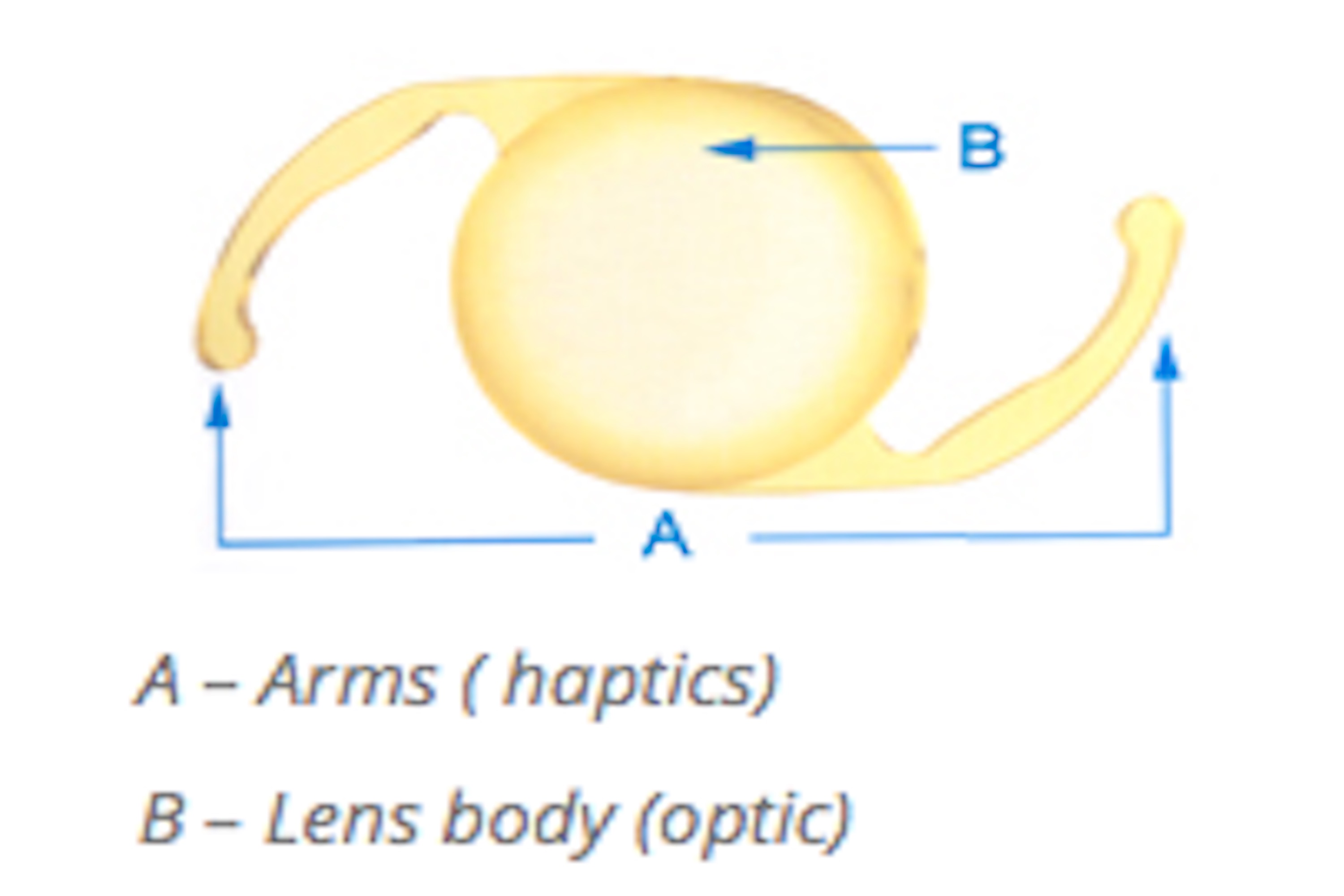
Intraocular Lens Implant (IOL)
An acrylic plastic, foldable lens implant is shown. Once folded, the lens is able to fit through the tiny, 3mm cataract surgery incision and is placed in the exact position that the original, clouded cataractous lens, was prior to its removal.
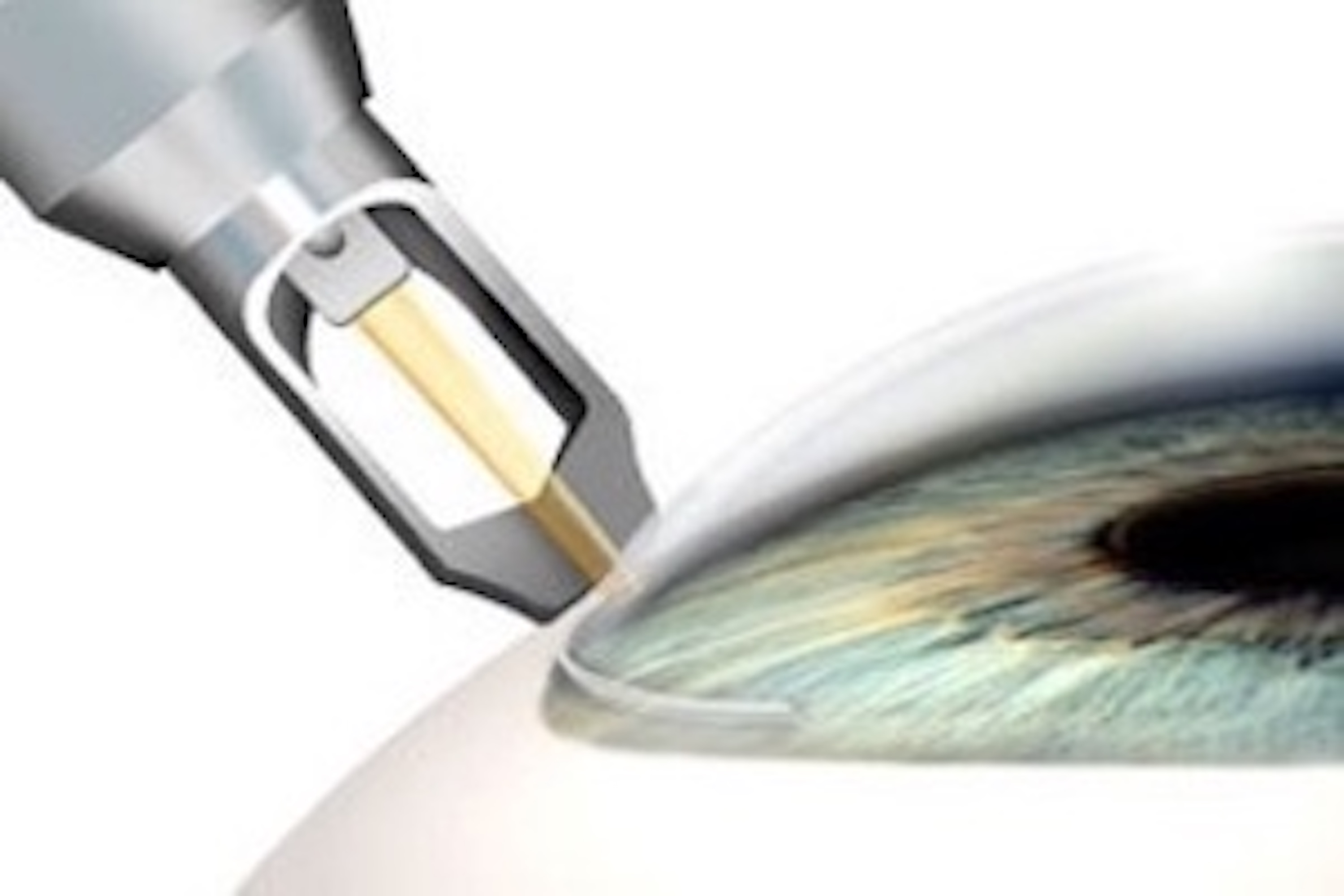
Limbal Relaxing Incisions
Astigmatism, if present, nay be corrected at the same time cataract is removed. A specially focused “Toric” lens implant may be used (not shown), or Limbal Relaxing Incitions (shown above) are used to reshape the cornea.
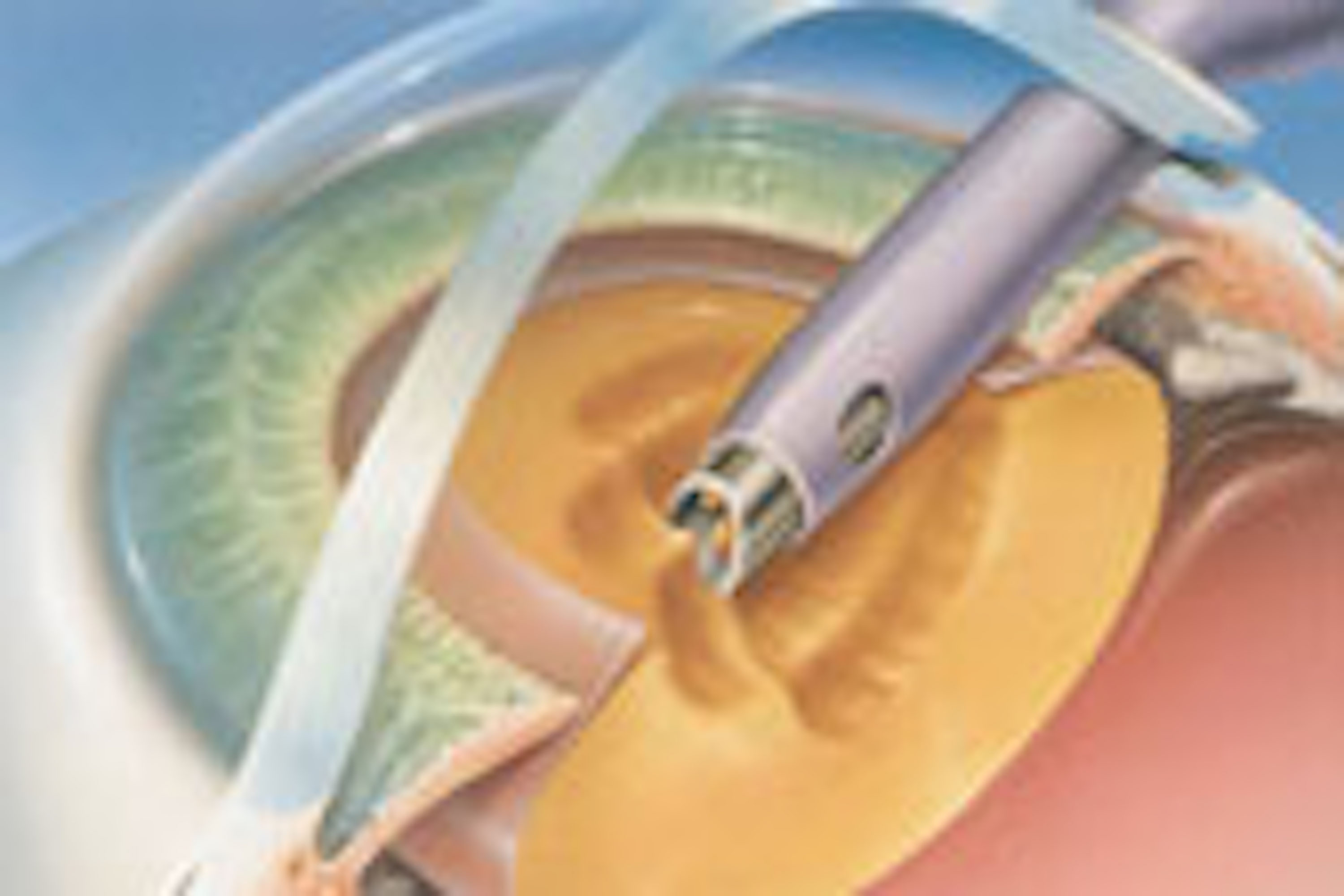
Phacoemulsification
Ultrasound probe (phacoemulsfication) is used to dissolve the cloudy cataractous lens of the eye. Notice that the lens is behind the pupil of the eye and is enveloped by a mebranous capsule, much like the skin of a grape.
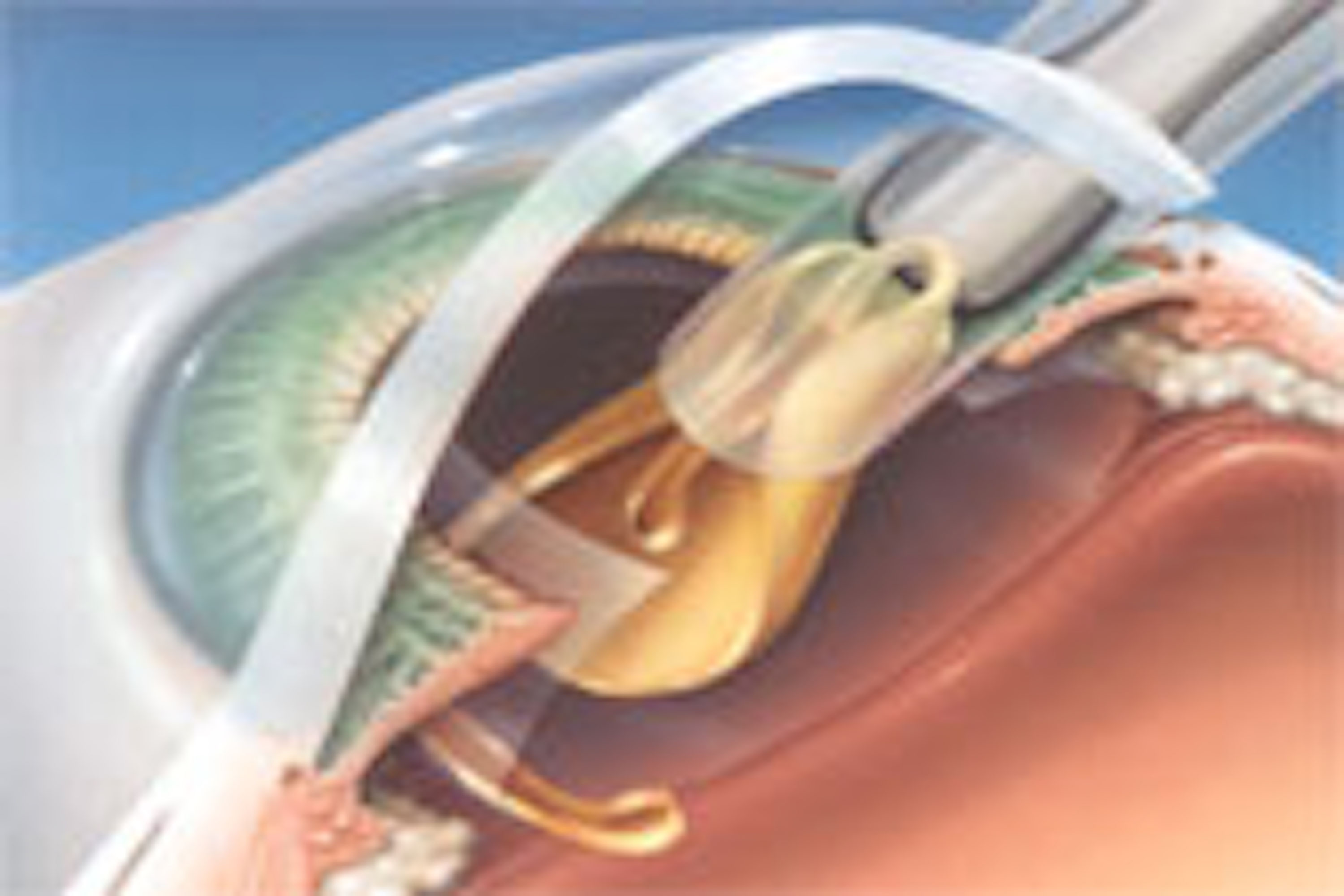
Insertion of folded Implant
Insertion and unfolding of the intraocular lens implant into the remaining lens capsule after the coudy cataract has been deissolved with ultrasound phacoemulsification. The insertion instrument is much like a plunger that pushes the lens out to deliver it through the small 3mm incision through which the ctaract was also removed.
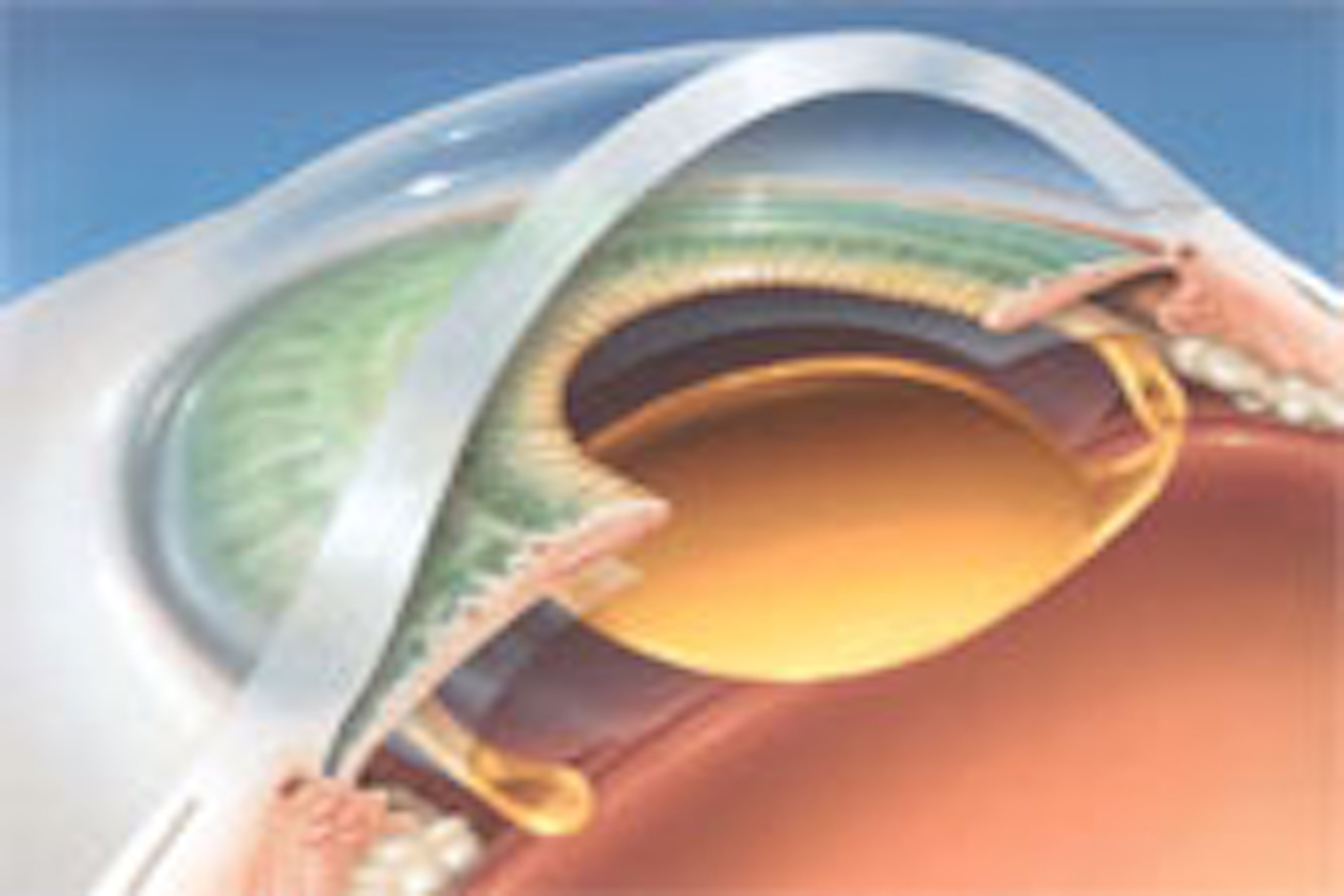
Completed surgery with IOL
The unfolded and now flat intraocular lens is resting in the lens capsule behind the pupil of the eye. The arms of the implant, called haptics, reach out to keep the lens centered. The finished result is that the eye now has a clear lens, rather than a cloudy lens.
To Schedule a visit… 740.389.5418
1462 Marion Waldo Road
Marion, OH 43302
Marion Eye Center
1462 Marion Waldo Road
Marion, OH 43302
740.389.5418
office@marioneyecenter.com
8:30am - 5:00pm, M-F
